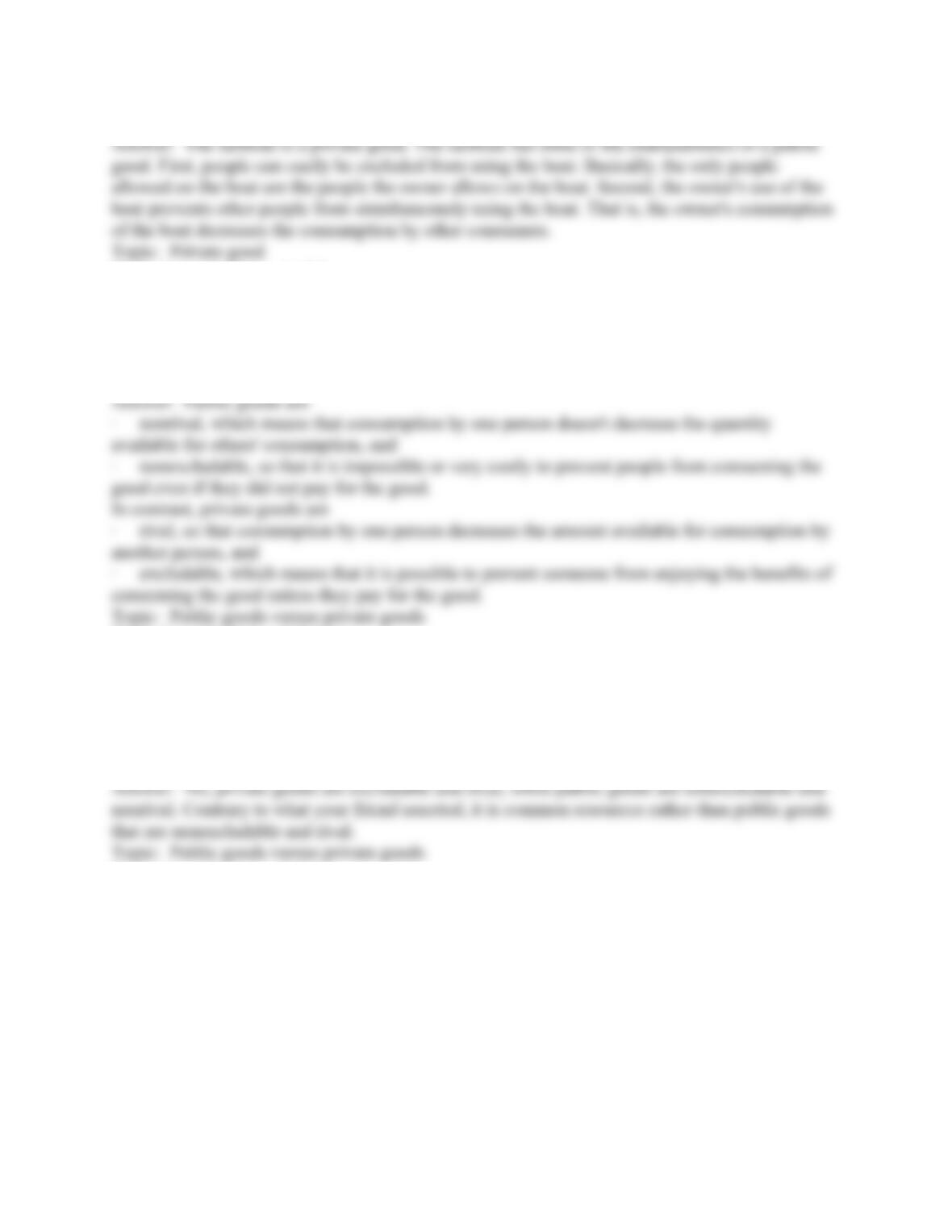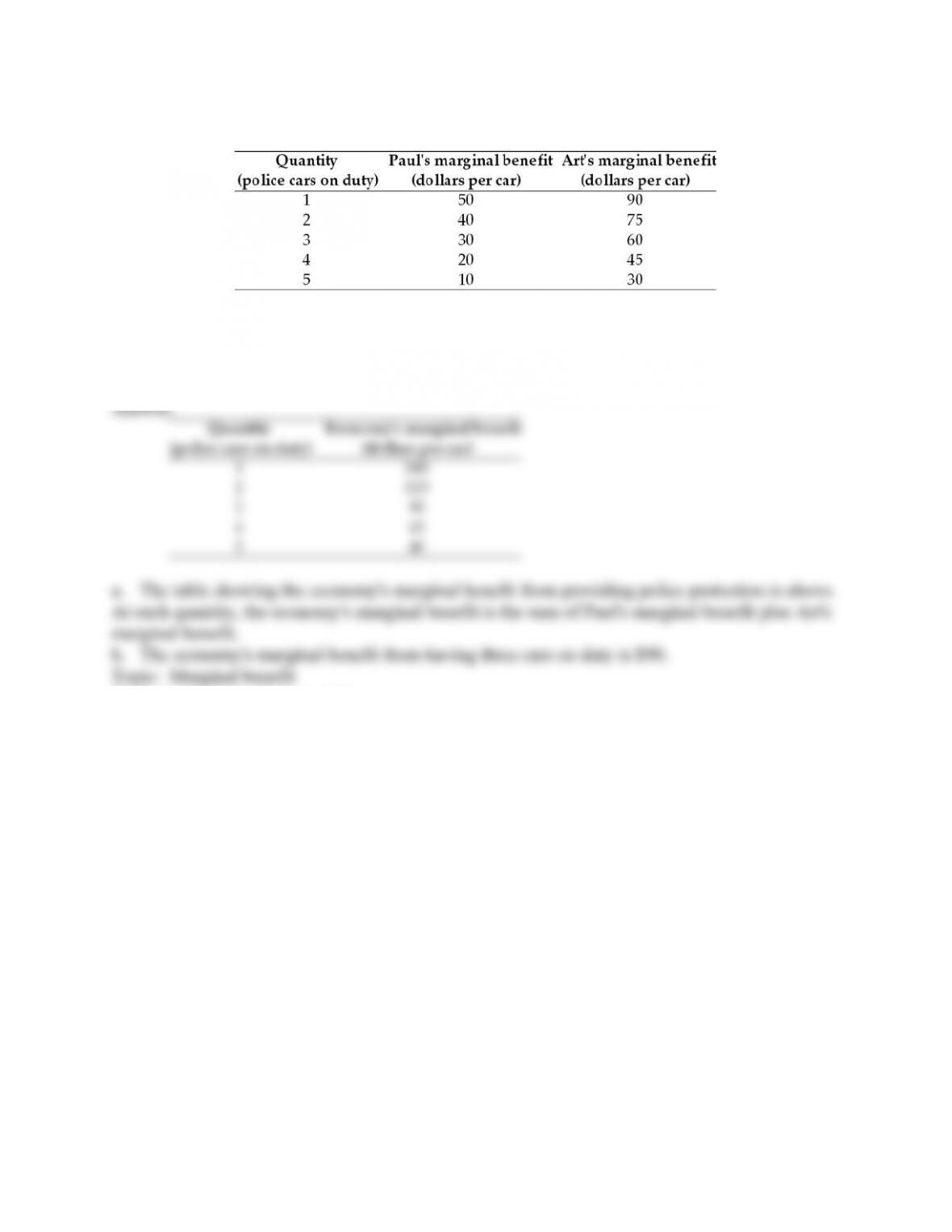
91
Copyright © 2011 Pearson Education, Inc.
5) National defense is a ________ because ________.
A) public good; it can be an overused resource
B) public good; it is nonrival and nonexcludable
C) common resource; no one has the incentive to pay for his or her share
D) private good; no one has an incentive to conserve the good
E) common resource; it suffers from the tragedy of the commons
Skill: Level 3: Using models
Section: Integrative
Author: CD
AACSB: Analytical reasoning
6) Fish in the ocean are an example of ________ because they are ________.
A) public good; nonexcludable and nonrival
B) public good; rival and excludable
C) common resource; rival and nonexcludable
D) common resource; nonrival and nonexcludable
E) private good; caught by private fishermen
Skill: Level 3: Using models
Section: Integrative
Author: CD
AACSB: Analytical reasoning
7) A natural monopoly, such as the Internet, is
A) nonrival and excludable.
B) rival and excludable.
C) nonrival and nonexcludable.
D) rival and nonexcludable.
E) None of the above answers are correct.
Skill: Level 2: Using definitions
Section: Integrative
Author: CD
AACSB: Reflective thinking



















